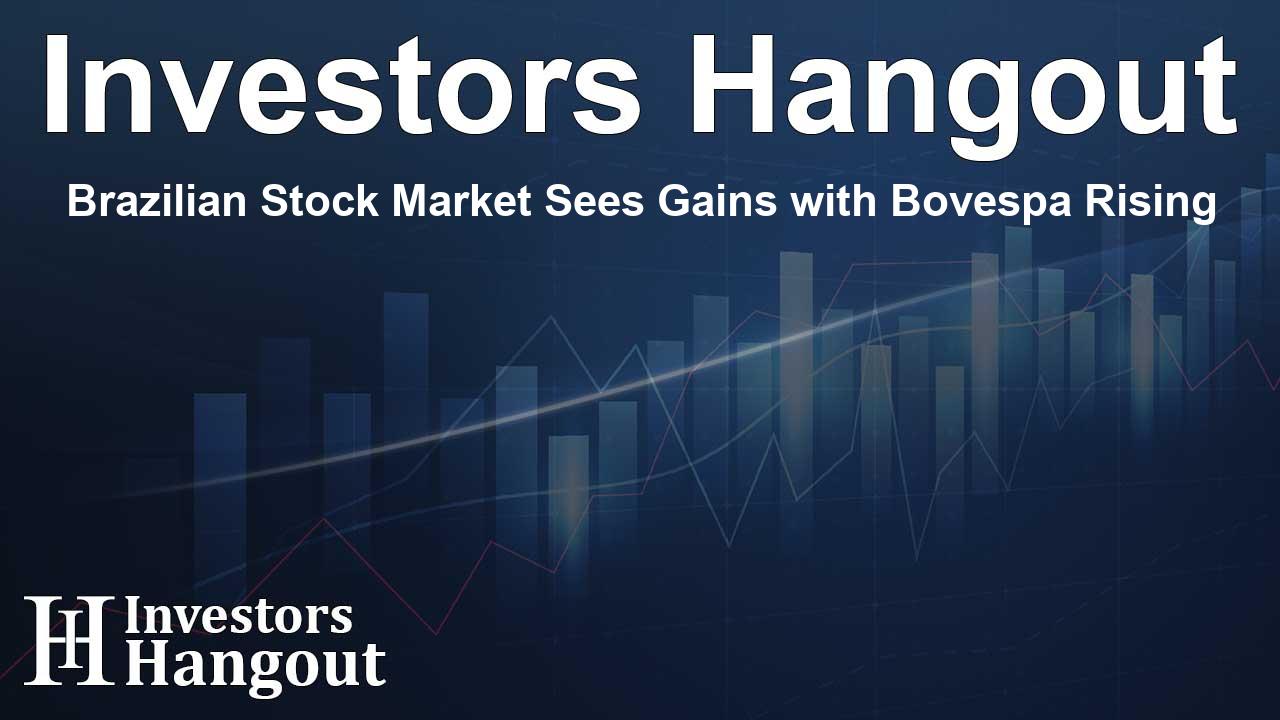Brazilian Stock Market Sees Gains with Bovespa Rising

Overview of Brazilian Stock Market Performance
The Brazilian stock market exhibited a positive trend at the end of trading on a recent Tuesday. Various sectors, most notably Real Estate, Financials, and Consumption, contributed to the uplift in stock prices. The results reflected investor confidence and a favorable economic environment.
Bovespa Index Highlights
The Bovespa index, a key marker for the Brazilian stock market, saw a modest increase of 0.25% at the closing bell. This slight uptick signals stability and growth within the market, attracting interest from investors both domestically and internationally.
Leading Stocks of the Day
Among the prominent gainers were Pet Center Comercio e Participacoes (BVMF: PETZ3), registering an impressive rise of 4.88%, ending the day at 4.30. Following closely was Marcopolo SA (BVMF: POMO4), which added 4.12% to close at 7.59. Additionally, Iguatemi SA Unit (BVMF: IGTI11) climbed by 3.60%, securing a value of 17.25 as trading wrapped up. These companies demonstrated strong performances within their respective sectors.
Declining Stocks
On the flip side, some stocks faced challenges. Eneva SA (BVMF: ENEV3) experienced a downturn of 2.80%, finishing at 10.75. Companhia Siderurgica Nacional (BVMF: CSNA3) also fell, down by 2.47% to end at 7.49, and Marfrig Alimentos SA (BVMF: MRFG3) dropped by 2.31%, closing at 16.51. Tracking these trends can offer insights for investors on potential market volatility.
Market Dynamics and Volume Analysis
The trading session brought more rising stocks than declining ones on the B3 Stock Exchange, reflecting a healthy market environment. With 470 stocks climbing compared to 459 declining, the overall sentiment was optimistic. Interestingly, 61 stocks remained unchanged, showcasing the diverse investor strategies in action.
Volatility and Index Movements
The CBOE Brazil ETF Volatility index, which tracks implied volatility for Bovespa options, recorded a decrease of 0.89%, reaching a new low of 28.86 over the past month. This decline in volatility is often seen as a sign of investor confidence, suggesting fewer concerns about sudden market shifts.
Commodities and Currency Trends
Commodity markets also saw notable movements on this day. Gold Futures for February delivery rose by 0.49%, reaching $2,691.65 per troy ounce, which indicates growing demand for gold as a safe-haven asset. In contrast, crude oil prices dipped by 0.87% to $76.63 per barrel, reflecting market adjustments in energy trading. Coffee prices fell by 1.33% to trade at $321.63, underlining the fluctuations faced by agricultural commodities.
Currency Exchange Rates
The currency exchange rates reflected some stability and reactivity to market movements. The USD/BRL saw a decrease of 0.70%, ending at 6.05, while the EUR/BRL remained relatively stable with a minor change of 0.02% to close at 6.25. The US Dollar Index Futures fell by 0.71%, landing at 109.04, indicating broader market trends impacting the currency valuations.
Conclusion
The recent trading session in Brazil's financial markets showcased resilience and positive sentiment. As the Bovespa index continues to rise and sectors demonstrate robust performances, investors remain optimistic about future growth. Keeping an eye on both stock movements and economic indicators is crucial for making informed investment decisions.
Frequently Asked Questions
What sectors contributed to the Bovespa index's rise?
The Real Estate, Financials, and Consumption sectors were the main contributors to the Bovespa index's rise.
Who were the top performers in the Brazilian stock market?
Pet Center Comercio e Participacoes, Marcopolo SA, and Iguatemi SA Unit were among the top performers, each showing significant gains.
What is the current state of commodity prices?
Gold prices have increased, while crude oil and coffee prices have seen declines, indicating varied trends in the commodities market.
How did the trading volume compare between rising and falling stocks?
Rising stocks outnumbered declining stocks, with 470 advancing against 459 declining, reflecting a generally positive market environment.
What does the volatility index indicate?
The decrease in the CBOE Brazil ETF Volatility index suggests lower implied volatility, often seen as a sign of greater investor confidence in the market.
About The Author
Contact Kelly Martin privately here. Or send an email with ATTN: Kelly Martin as the subject to contact@investorshangout.com.
About Investors Hangout
Investors Hangout is a leading online stock forum for financial discussion and learning, offering a wide range of free tools and resources. It draws in traders of all levels, who exchange market knowledge, investigate trading tactics, and keep an eye on industry developments in real time. Featuring financial articles, stock message boards, quotes, charts, company profiles, and live news updates. Through cooperative learning and a wealth of informational resources, it helps users from novices creating their first portfolios to experts honing their techniques. Join Investors Hangout today: https://investorshangout.com/
The content of this article is based on factual, publicly available information and does not represent legal, financial, or investment advice. Investors Hangout does not offer financial advice, and the author is not a licensed financial advisor. Consult a qualified advisor before making any financial or investment decisions based on this article. This article should not be considered advice to purchase, sell, or hold any securities or other investments. If any of the material provided here is inaccurate, please contact us for corrections.
